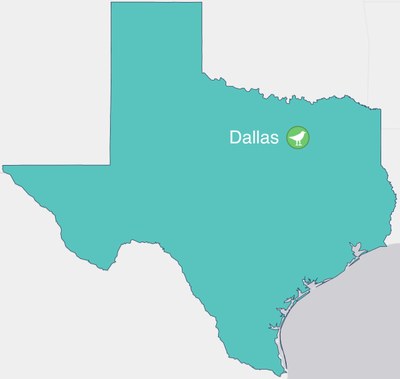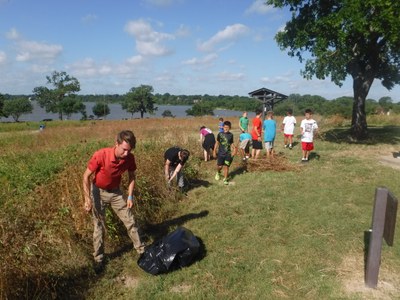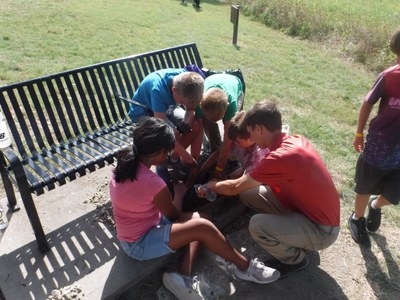Dallas: Bird City Texas Certified Community
Learn more about the excellent work being done in Dallas to involve their community, improve habitat, and create safer spaces for birds. Below you will find some details about Dallas as well as a few examples of the local bird-friendly initiatives they have implemented that led to their Bird City Texas official certification. This list is not exhaustive but hopefully helps give insight on what local communities are doing to support birds and the spaces where they live. We hope these examples help you discover ways your community can work to protect birds and their habitat where you live.
Details
| Population: | 1.341 Million |
|---|---|
| Acres of Parkland: | 23,464 |
| Dates of certification: | 2020-2022 |

Community Engagement
Dallas has been working for years to keep their community engaged in a variety of bird-centric and bird-positive activities. We’re delighted to be able to highlight some of these activities with their Bird City Texas certification. For instance, Trinity River Audubon Center and the greater Dallas area have been hosting Christmas Bird Counts since 2012. Starting in 2018, and completing in time for the 2019 application deadline, Groundworks Dallas created a new trail in Hines Park, or the fact that Texas Discovery Garden has been hosting successful, popular native plant sales for years!
Habitat Enhancement and Protection
Dallas has made extensive habitat enhancements that benefit both birds and people. They have a ‘Conservation Management Plan’ which helps the city staff properly manage different properties. Additionally, Dallas has been working diligently to restore prairie habitat on 16 different plots!
Creating Safer Places for Birds
While maintaining and improving important habitat, Dallas has kept a consistent standard for taking care of the birds which will use these areas. For instance, Dallas has a comprehensive Integrative Pest Management plan to minimize chemical insecticides. The city has worked to include inclusive plans to reduce harm to waterfowl populations caused by feeding inappropriate diets. Signs in both English and Spanish are posted at various parks to explain how feeding ducks is actually harmful to the ducks and the waterways they need.
Want to learn more?
Contact Dallas Parks & Recreation directly to learn more about what they are doing to protect birds in their community.

Additional Resources
Certification Criteria Commitment
Certified communities make a three-year commitment to accomplish specific projects, host bird-related events, promote local initiatives, pass bird-friendly ordinances, and more in order to achieve certification. These commitments fall into three categories: Community Engagement, Habitat Enhancement and Protection, and Creating Safe Spaces for Birds. Each category has a minimum requirement of actions a certified community must select. In addition to the example listed above, Dallas has also committed to complete the following actions for each of the three categories.
Category 1: Community Engagement (5 required)
- Participates in at least one National Audubon Society community science program annually
- Engage in long-term local bird monitoring programs that incorporate eBird and/or iNaturalist
- Create bird watching amenities in public parks
- Host a completely native plant sale and advertise community-wide for the event.
- Host 3 community volunteer planting events per year
- Park system/museums offer education opportunities that complement Bird City Texas Program
- Speaker/workshop series focusing on birds, wildlife, habitat, environmental stewardship. Min 3/year
Category 2: Habitat Enhancement and Protection (8 required)
- Develop and implement bird-centric wildlife management plan(s)
- Modify and improve existing habitat for birds, wildlife, and native plant communities
- Create and conserve wildlife corridors and connectivity between habitat areas
- Preserve dead trees in parks/natural areas to provide foraging and nesting habitat
- Implement an active invasive plant species removal program on public lands
- Implement seasonal management practices that protect nesting birds
- Manage natural areas to encourage wildlife habitat, including “No Mow” areas for native plants
- Sponsor at least 5 habitat restoration projects of at least 1 acre in size in the community
- Conduct inventory of city lands to document plant and animal species and assesses habitat quality
Category 3: Creating Safer Spaces for Birds (4 required)
- Implement strategies to minimize use of pesticides and herbicides on city-managed property
- Prohibit feeding of ducks on community-managed properties
- Remove invasive or harmful animal species, including some bird species, deer, and/or wild pigs.
- Prohibits the formation, maintenance, or support of outdoor cat colonies inside or adjacent to parks/natural areas. Removal of cat colonies within or adjacent to parks/natural areas will qualify
- Monitor and limit the release of native wildlife and prohibit the release of domestic animals
